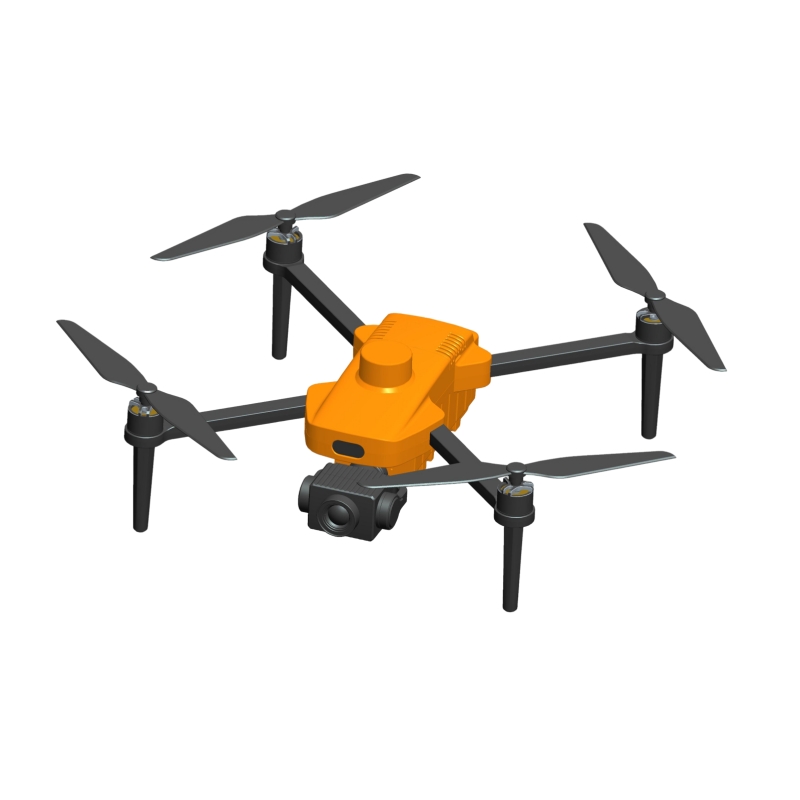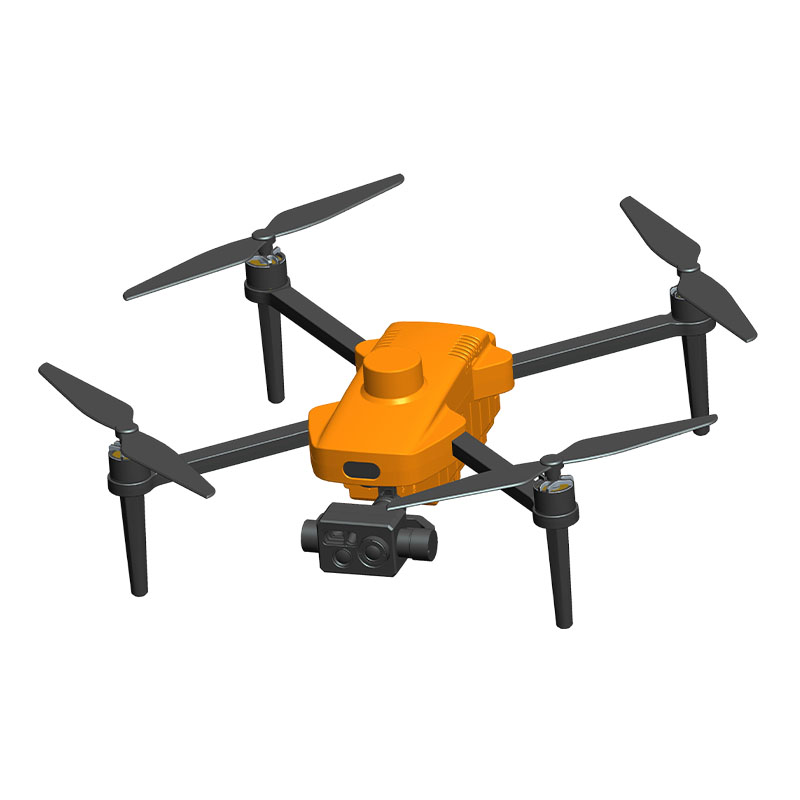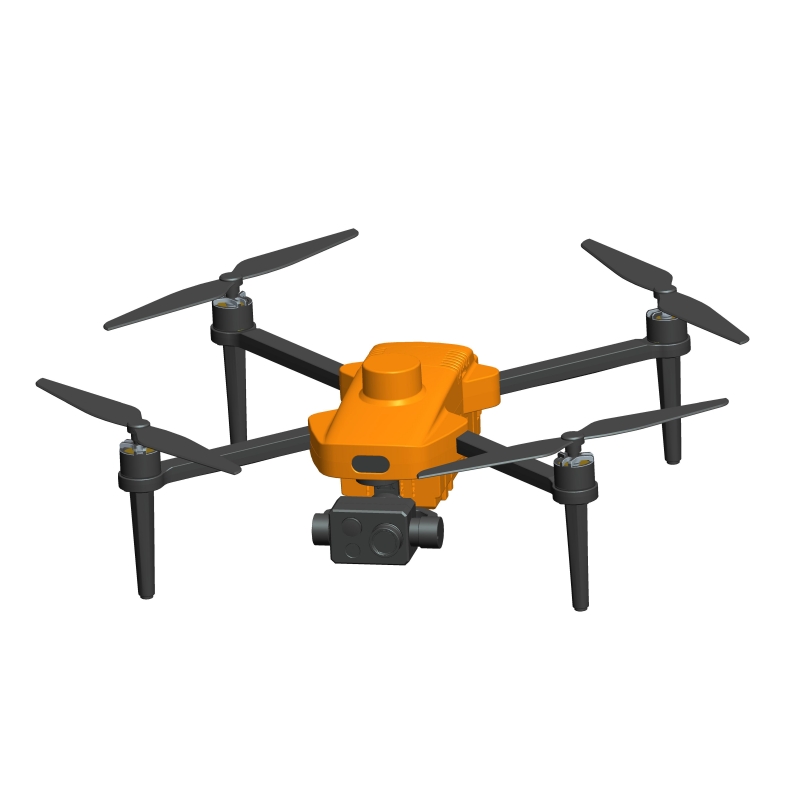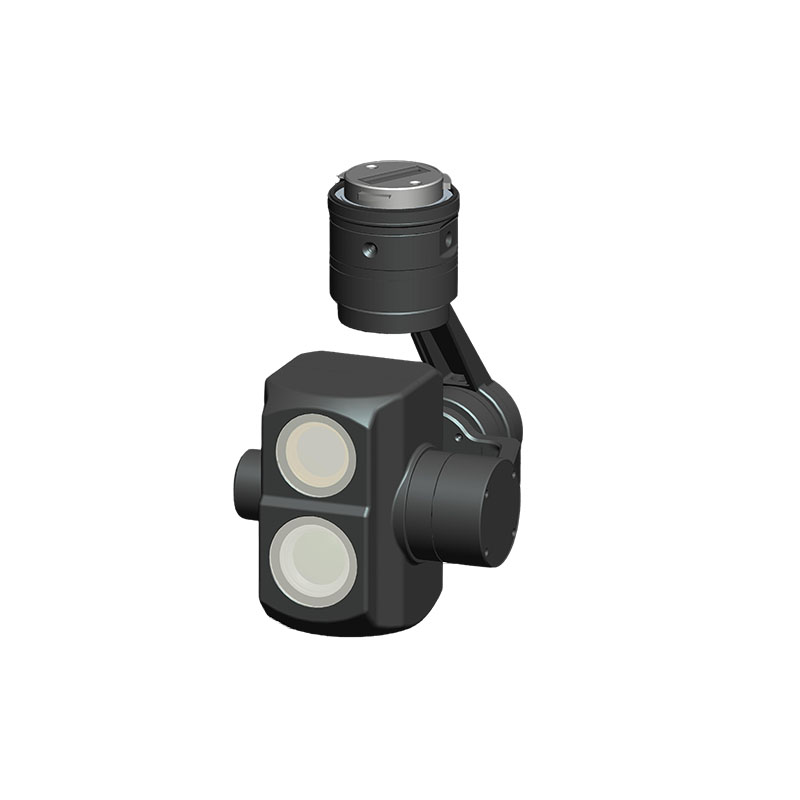How can drones equipped with dual light pods quickly illuminate complex scenes?
Release Time : 2025-10-13
In modern emergency rescue, firefighting, power repair, and nighttime inspections, lighting conditions often become a critical factor limiting operational efficiency. Traditional lighting methods, such as ground-based searchlights, lighting vehicles, or handheld flashlights, are limited by terrain, distance, and blind spots, making it difficult to quickly cover large areas or complex structures. However, with the maturity of drone technology, an efficient, flexible, and highly maneuverable aerial lighting solution has emerged: drones equipped with dual light pods. By hovering, illuminating from multiple angles, and combining multiple lighting functions, they can provide clear visual support to rescuers immediately after a disaster, truly achieving precise illumination wherever it's needed.
1. Aerial Perspectives Overcome Ground-Based Limitations, Achieving Full Coverage
Complex scenes often feature rugged terrain, collapsed buildings, obstructed vegetation, or confined spaces. Ground-based light sources struggle to penetrate obstacles or reach elevated locations. Dual light pods, mounted externally on the underside of a drone, can quickly reach the target area with the aircraft, deploying and illuminating within minutes. During earthquake rescue operations, the drone can fly above gaps between collapsed buildings, using its dual lights to shine downward simultaneously, clearly illuminating piles of rubble, gaps between buildings, and the location of trapped people. During forest searches for missing persons, the drone can fly along valleys, using its dual lights to alternately scan clearings, significantly improving nighttime detection efficiency.
2. Dual Light Collaboration for Multifunctional Illumination Modes
Unlike single-light supplemental illumination systems, the core advantage of the dual light pod lies in its functional division of labor and collaborative operation. The two independently controlled LED light heads can be configured in different modes depending on the mission requirements:
Strong Light Mode: For basic illumination of large areas, each light can reach over 5,000 lumens with a range of over 100 meters, providing a stable light source at the scene.
Strobe Warning Mode: One light remains on while the other switches to a red and blue strobe pattern, simulating a police light effect. This is used for traffic control, crowd warning, or to disperse dangerous areas.
Dynamic Scan Mode: The two lights alternately flash or oscillate left and right, creating a "scanning" effect, enhancing detection of moving targets. This is particularly useful for water rescue and night patrols. This "one static, one dynamic" or "dual-light complementary" design enables the drone to not only illuminate but also communicate and guide, greatly enhancing the flexibility and responsiveness of on-site command.
3. Integrated Design Adapts to Various Mission Scenarios
Modern dual light pods typically feature lightweight aluminum alloy or composite housings with IP67-rated waterproof, dustproof, and impact resistance, ensuring stable operation in rain, snow, dense fog, high temperatures, and vibration environments. The pods integrate voltage stabilization circuits, cooling systems, and intelligent control modules, enabling seamless integration with mainstream industrial drones. Remote control, power on/off, brightness adjustment, and mode switching can be performed remotely via a remote controller or ground station. Importantly, dual light pods often share gimbal or mounting interfaces with other payloads, achieving "multi-functionality in one device." For example, at a fire scene, a drone first uses thermal imaging to locate the fire point before activating the dual light pod to illuminate the burning area, helping firefighters determine the direction of the fire's spread. During nighttime power line inspections, the dual lights can precisely illuminate key areas such as insulators and hardware, enabling high-definition cameras to capture detailed defects.
4. Rapid Response Improves Emergency Response Efficiency
In emergencies, prime rescue time is extremely valuable. Drones equipped with dual light pods eliminate the need to wait for large lighting equipment to be transported and set up; a single operator can take off and operate in just three minutes. Compared to traditional lighting vehicles, which require hours to deploy, drone lighting systems offer immediate availability and immediate visibility. Furthermore, drones can continuously replace batteries or rotate multiple units for continuous illumination. Some systems also support automatic route planning, allowing drones to cruise along pre-set paths and continuously provide tracking light for mobile rescue teams.
Drone-powered dual light pods are redefining illumination for complex scenes. They not only overcome the spatial limitations of traditional lighting but also, through dual-light coordination, intelligent control, and multi-payload integration, elevate "aerial illumination" to "intelligent visual support." In time-sensitive emergency response missions, this technology acts as a "flying searchlight," illuminating the light of hope for rescue workers and becoming an indispensable aerial force in modern emergency response systems.
1. Aerial Perspectives Overcome Ground-Based Limitations, Achieving Full Coverage
Complex scenes often feature rugged terrain, collapsed buildings, obstructed vegetation, or confined spaces. Ground-based light sources struggle to penetrate obstacles or reach elevated locations. Dual light pods, mounted externally on the underside of a drone, can quickly reach the target area with the aircraft, deploying and illuminating within minutes. During earthquake rescue operations, the drone can fly above gaps between collapsed buildings, using its dual lights to shine downward simultaneously, clearly illuminating piles of rubble, gaps between buildings, and the location of trapped people. During forest searches for missing persons, the drone can fly along valleys, using its dual lights to alternately scan clearings, significantly improving nighttime detection efficiency.
2. Dual Light Collaboration for Multifunctional Illumination Modes
Unlike single-light supplemental illumination systems, the core advantage of the dual light pod lies in its functional division of labor and collaborative operation. The two independently controlled LED light heads can be configured in different modes depending on the mission requirements:
Strong Light Mode: For basic illumination of large areas, each light can reach over 5,000 lumens with a range of over 100 meters, providing a stable light source at the scene.
Strobe Warning Mode: One light remains on while the other switches to a red and blue strobe pattern, simulating a police light effect. This is used for traffic control, crowd warning, or to disperse dangerous areas.
Dynamic Scan Mode: The two lights alternately flash or oscillate left and right, creating a "scanning" effect, enhancing detection of moving targets. This is particularly useful for water rescue and night patrols. This "one static, one dynamic" or "dual-light complementary" design enables the drone to not only illuminate but also communicate and guide, greatly enhancing the flexibility and responsiveness of on-site command.
3. Integrated Design Adapts to Various Mission Scenarios
Modern dual light pods typically feature lightweight aluminum alloy or composite housings with IP67-rated waterproof, dustproof, and impact resistance, ensuring stable operation in rain, snow, dense fog, high temperatures, and vibration environments. The pods integrate voltage stabilization circuits, cooling systems, and intelligent control modules, enabling seamless integration with mainstream industrial drones. Remote control, power on/off, brightness adjustment, and mode switching can be performed remotely via a remote controller or ground station. Importantly, dual light pods often share gimbal or mounting interfaces with other payloads, achieving "multi-functionality in one device." For example, at a fire scene, a drone first uses thermal imaging to locate the fire point before activating the dual light pod to illuminate the burning area, helping firefighters determine the direction of the fire's spread. During nighttime power line inspections, the dual lights can precisely illuminate key areas such as insulators and hardware, enabling high-definition cameras to capture detailed defects.
4. Rapid Response Improves Emergency Response Efficiency
In emergencies, prime rescue time is extremely valuable. Drones equipped with dual light pods eliminate the need to wait for large lighting equipment to be transported and set up; a single operator can take off and operate in just three minutes. Compared to traditional lighting vehicles, which require hours to deploy, drone lighting systems offer immediate availability and immediate visibility. Furthermore, drones can continuously replace batteries or rotate multiple units for continuous illumination. Some systems also support automatic route planning, allowing drones to cruise along pre-set paths and continuously provide tracking light for mobile rescue teams.
Drone-powered dual light pods are redefining illumination for complex scenes. They not only overcome the spatial limitations of traditional lighting but also, through dual-light coordination, intelligent control, and multi-payload integration, elevate "aerial illumination" to "intelligent visual support." In time-sensitive emergency response missions, this technology acts as a "flying searchlight," illuminating the light of hope for rescue workers and becoming an indispensable aerial force in modern emergency response systems.







